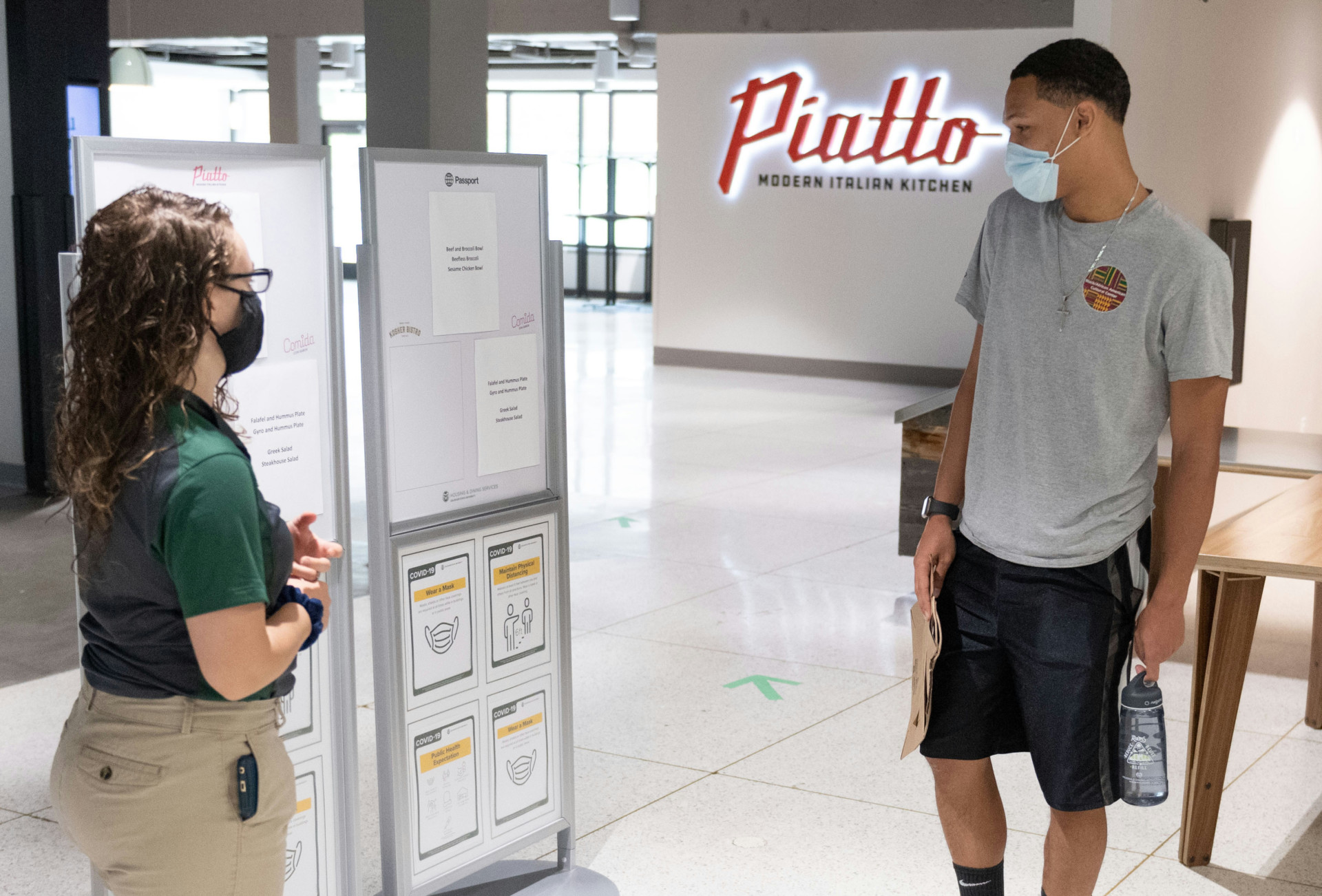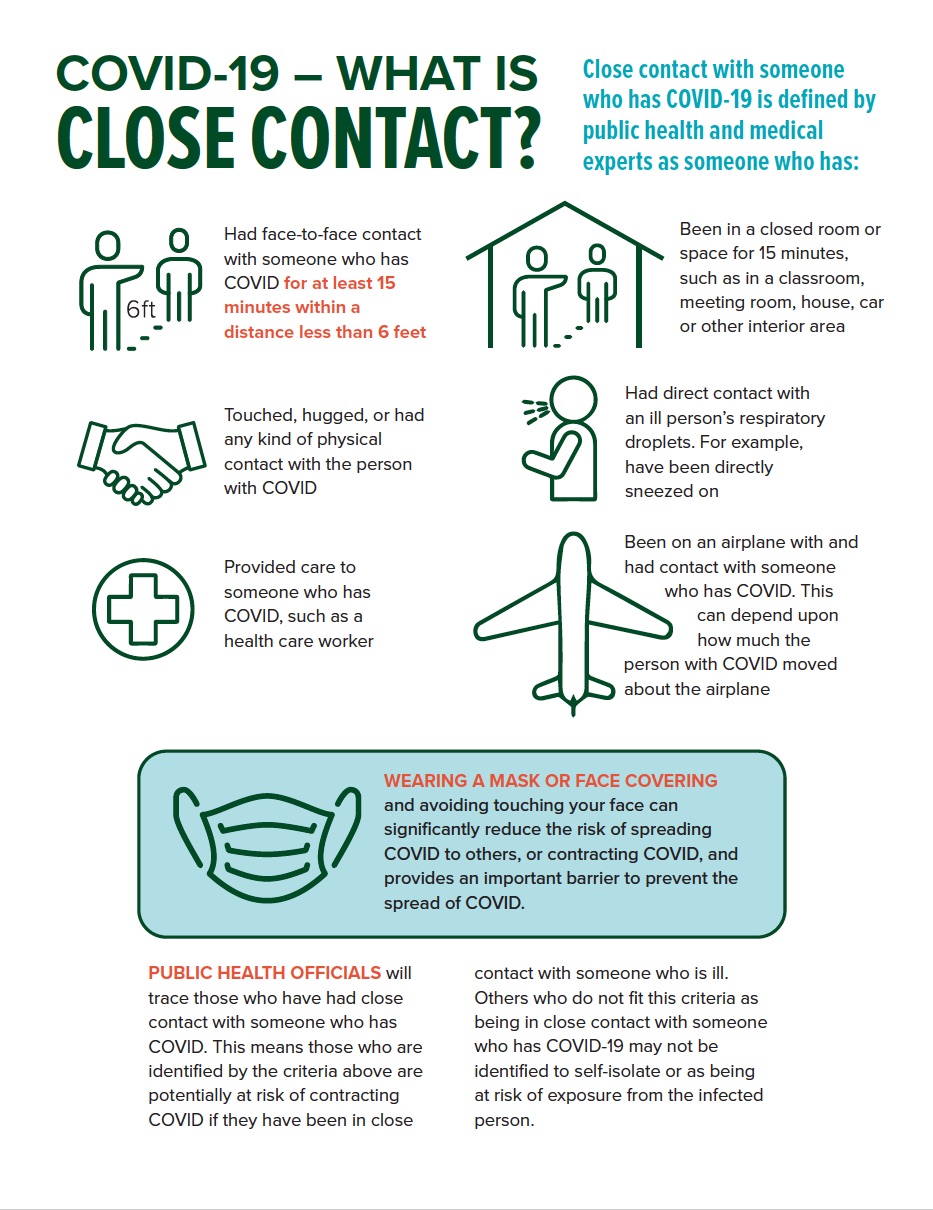
Proper social distancing is one of the most important tools in slowing the spread of the virus that causes COVID-19; tracing the close contacts of individuals who test positive for the virus is another. Photo by John Eisele, CSU Photography
The number of COVID-19 cases in the state and nation are growing each day. As a Colorado State University student, faculty or staff member, you may be concerned about how you would know if you have been exposed to someone who tests positive. Here’s how it works.
Your cell phone rings. A voice on the other end says it’s a member of the CSU public health COVID-19 contact tracing team, informing you that you may have tested positive or come in contact with someone diagnosed with the virus. Should you:
A. Cooperate with the caller and provide information asked
B. Be truthful and complete your answers
C. Keep a cool head and do not panic
D. Follow any directions the health expert gives you
E. All of the above
If your answer is E, you are correct. CSU’s public health officials are following Centers for Disease Control and Prevention requirements and best practices when they reach out to those who may be defined as a close contact to someone who has COVID-19.
Public health officials have used contact tracing as a critical step in controlling communicable diseases for decades. By determining who has been infected, identifying who may have come into contact with the infected person and whether or not they have been infected, and in turn who their close contacts have been, health experts can ensure that positive or potentially positive cases can be isolated, receive medical assistance, and stop the local spread of the illness.
“Contact tracing is essential to let individuals know that they may have been exposed to a positive case, to provide the necessary public health guidance to prevent any additional cases, and helps us break the transmission cycle,” said Jeannine Riess, CSU’s public health administrator.
Riess stressed that discussions with public health staff are confidential and that personal and medical information will be kept private and only shared with those who may need to know, like your health care provider.
“All our information is confidential and by cooperating with the contact tracer, you will be helping us contain the spread of COVID-19,” added Lori Lynn, executive director of the CSU Health Network and co-chair of the CSU Pandemic Preparedness Team.
Tracing the virus
Trained contact tracers work with members of the university community, including students and employees, who may have tested positive for COVID-19 or have been exposed to someone who has tested positive. The public health office is preparing for the arrival of students on campus by scaling up the staff and structure for tracing dozens of potential cases and contacts.
Contact tracing is one of an arsenal of tools used by the office to quickly identify and contain potential cases of COVID-19. Another significant component is the online daily symptom checker – the hub where students, faculty and staff should report if they’ve tested positive for COVID-19, believe they’ve been exposed, or have symptoms.
Since May 21, CSU has recorded 57 confirmed cases of COVID-19 associated with faculty, staff and students; additional individuals have been required to quarantine due to potential close contact with someone who has tested positive. This number is compiled and shared by CSU and Larimer County public health officials. Some of the students, faculty and staff who have tested positive have not been on CSU grounds. (See the dashboard tracking CSU positive cases).
Public health training
Lynn said tracers include students and faculty in the Colorado School of Public Health at CSU and others with public health backgrounds. Their training meets CDC, state and county regulations and includes completing a certification course, hours shadowing established contact tracers, and frequent team meetings to perfect the skills needed to talk to people about possible exposure.
The CSU Public Health Administrator works closely with the Colorado Department of Public Health and the Larimer County Department of Health to report COVID-19 cases and share information on trends and preventive approaches to controlling the pandemic. The offices also share contact tracing software so that both can see positive cases and close contacts across the university and county.
“The county needs to have a very clear view of what’s happening at CSU to make sure that we are not duplicating efforts and to coordinate our approach when there is overlap with cases,” said Lynn.
Web of contacts
To begin to piece together the web of people someone who has tested positive may have come in contact with, contact tracers must thoroughly interview the infected person. The individual will be asked to provide details about where they have been, what they have been doing and who they have spent time with.
For example, the tracer may ask:
• Where do you live and who else stays there?
• Who visits or stays there from time to time? When was the last time they were there?
• Where have you visited the past several days?
• Who have you spent time with?
• Have you eaten out or visited any stores?
• When was the last time you worked?
• Were you wearing a face covering?
• During (a time that is specified), were you in contact less than 6 feet for longer than 15 minutes?
Riess and Lynn stressed that the name – or even the gender – of the infected individual will not be shared with those contacted.
“The contact tracer may say something like, ‘We understand that you may have attended a party on Wednesday and an individual who was at that party has tested positive for COVID-19,’” explained Lynn. “We want people to understand that if they receive a call from a contact tracer, there is absolutely no shame involved.”

What to do if you receive a call
First of all, do not panic. Riess said the contact tracers will only notify people who were in “close contact” with an infected person. The CDC defines close contact as someone who was within 6 feet of an infected person for at least 15 minutes starting from 48 hours before illness onset until the time the patient is isolated.
Any person who meets the criteria of a close contact may be instructed to stay home, maintain social distancing, and self-monitor and quarantine until 14 days from the last date of exposure, she said. Anyone who has come in contact with someone with the virus should make extra effort to avoid people who are at higher risk for getting very sick from COVID-19, such as older adults and people with other medical conditions.
Lynn added that contact tracers rely on people to answer questions openly, honestly and as thoroughly as possible for the process to successfully trace and stop virus transmission.
“Remember, we will protect the confidentially of a person’s medical information,” she said. “We are just trying to help stop the spread and keep as many of our friends and co-workers as healthy as possible.”
COVID-19 Recovery website
For complete information on CSU’s COVID-19 Fall 2020 plan, visit the COVID-19 Recovery website at covidrecovery.colostate.edu.